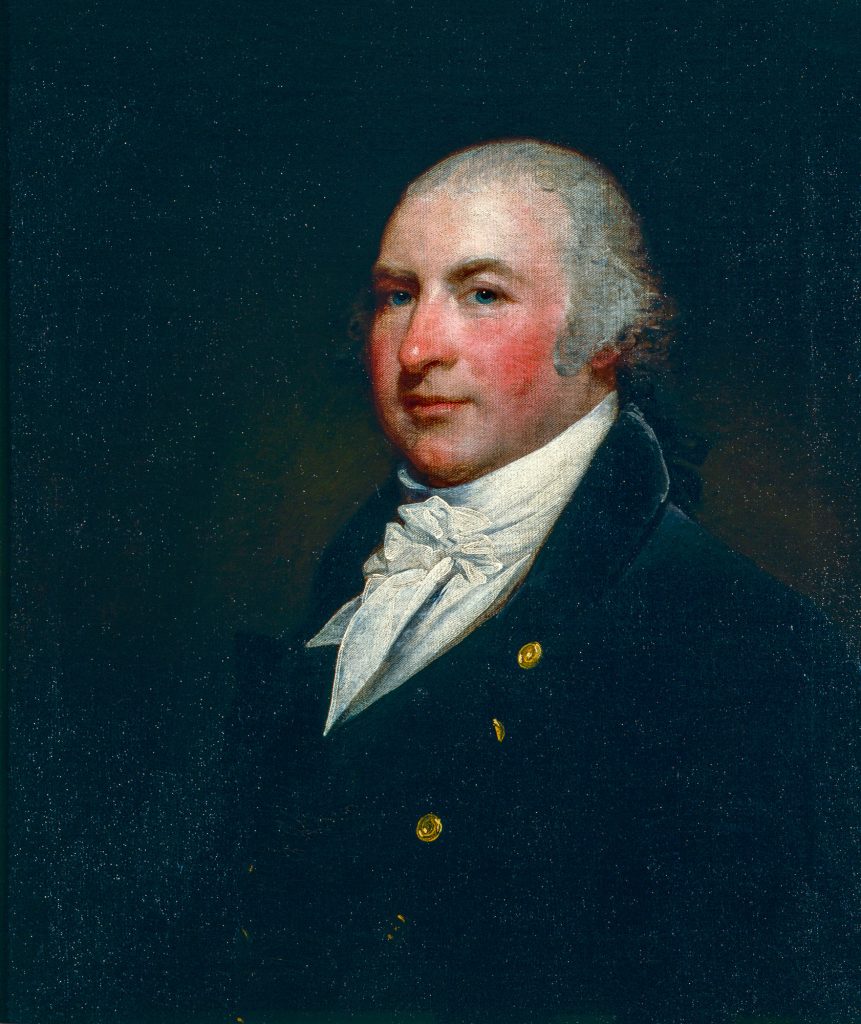Isaac Franks was a grandson (on his mother’s side) of Abraham Franks, one of the London-based brothers of New York’s Jacob Franks, as well as of their first cousin, Benjamin Franks (on his father’s side). Like his older cousins portrayed in the Levy-Franks family portraits, Isaac Franks was born in New York. However, his political opinions were entirely opposite to their Loyalist sympathies – he was, in fact, a strong supporter of the American cause. Only seventeen when war broke out, Franks quickly enlisted in Col. Lesher’s regiment of New York Volunteers and fought at the Battle of Long Island in August 1776, the first major engagement of the Revolutionary War. Captured when New York City fell to British forces in September, Franks spent the next three months as a prisoner of war. In 1777, after escaping across the river to New Jersey in a leaky boat, he was appointed to the quartermaster department of the Continental Army. He would serve in that post until February 1781, when Congress appointed him Ensign in the Seventh Massachusetts Regiment, a position he was forced to resign in 1782 due to ill health.
At the conclusion of the war, Franks, then twenty-three, married Mary Davidson, a Christian. Though born Jewish, Franks had in fact been a practicing Christian himself for several years prior to his marriage. The young couple set up residence in Germantown, Pennsylvania, where Franks took up work as a broker. In 1789, Franks was appointed a Notary and Tabellion Public of the Commonwealth of Pennsylvania; he was later appointed as Justice of the Peace for Germantown and Roxborough in 1795. Franks also maintained his links to military service through an appointment as Lieutanant Colonel in the Pennsylvania militia in 1794. In 1819 he won appointment as Prothonotary of the Supreme Court of Pennsylvania, a post he held until his death three years later.
During the infamous yellow fever epidemic of 1793, George Washington relocated the seat of the federal government from Philadelphia, where the disease was rampant, to the relative seclusion and safety of Germantown, and the Franks home became the Germantown White House during this retreat. President Washington not only slept under Isaac Franks’ roof, but also held cabinet meetings there. Thus, Thomas Jefferson, Alexander Hamilton and Edmund Randolph were visitors to the Franks home during that time. Washington returned to stay with Franks again the following year, this time for a vacation with the First Lady,
